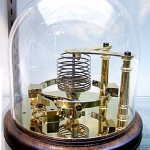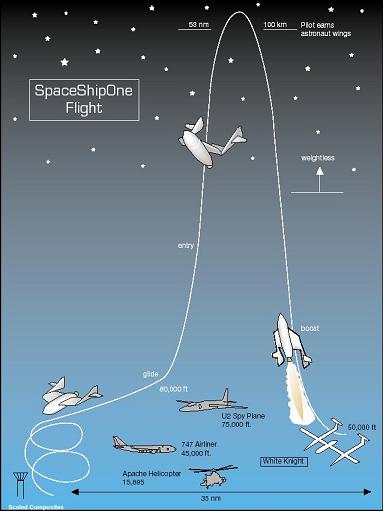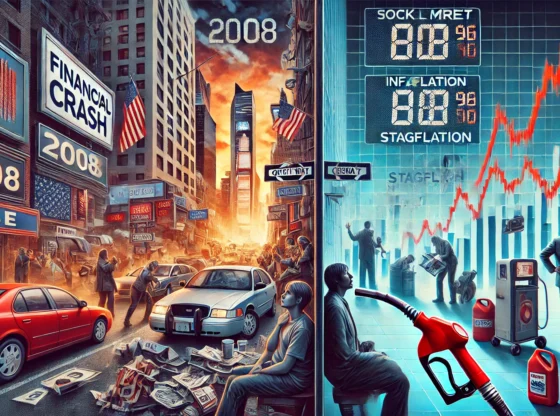
A History of Prizes
Prizes have been used throughout history as a means to foster innovation and to solve problems via incentives. Mainly those relating to technological breakthroughs.

A classic example dates back to 1714 when the British Parliament offered a prize for the discovery of a method to determine longitude, the so-called Longitude Act. The parliament offered a monetary reward to anyone who could find a simple and practical method for the precise determination of a ship’s longitude, to an accuracy of not greater than one degree of longitude. Although the prize was never paid, John Harrison received grants and awards that far exceeded the prize for inventing the marine chronometer.
Prizes, Limited Time Monopoly and R&D
Prizes offer advantages to other forms of innovation incentives, such as return on company R&D or patents providing a limited time monopoly as an incentive.
The incentives for investments can be very weak for some research areas. Those with vague or ambiguous potential payoffs. Which is often true for basic research. Or barriers due to large and very costly capital investments that effectively hinders investments.
High costs and scale to reach potentially ambiguous returns surely don’t provide enough incentives that appeal for investment, even if the potential returns of investments are very large.
In these cases, prizes provide a solution to bridge incentives for innovation to investments. And in the wake of research breakthrough, a new landscape can be effectively be unlocked by prizes for ordinary means of investments to take its place.
The Benefits of Prizes
- Results-only financing – Pay for success.
- Investment leverage – Funds invested by all competitors typically exceed what is spent on operating and awarding the prize
- Pathway agnostic – Won’t predict which approach is best; only the desired outcome.
- Global talent pool – Attracting some of the best minds in the world and focus them on one problem
- Highly publicized – Can educate and inspire the public
Payoff
For scenarios where incentives for investments are low often also involve research that addresses major global problems, such as clean energy solutions for sustainability and environment protection. Or such as the tragedy of the commons problems regarding oil spills and overfishing. Food and agricultural development for higher productivity, medicine and the development of vaccines for those diseases that mainly affect the poor.
A good example of those research areas where cost and scale act as a barrier to investment are those related to space. As space exploration can enable a new playing field to harness potential resources found in vast amounts beyond Earth.
Another example is that of vaccine research. Since disease prevention is most acute in developing countries. Where consumers have both low purchasing power and sparse resources to invest in research. This thereby implies low or ambiguous potential payoff to cover high costs of research.
As discoveries spurred by prices can provide a high degree of dissemination. The payoff that benefits all of us and not necessarily related to the area for which the discovery was made. This is a payoff that not necessarily imply benefits for the company that bears the costs of ordinary development and research.
Prizes often provide a stronger link between payoff and the cost of research. Since when a prize is announced, the payoff is no longer ambiguous.
Perhaps the greatest advantage of prices is that of total investments. Since invested means by competitors often greatly exceeds that of the announced prize. As many competitors, each participate and invests resources and time. The accumulated amount of investments can potentially vastly exceed that of the value of the prize, only given to the winner of the contest.
Prizes
The most known prize for research and science is certainly the Nobel Prize. But as the X Prize Foundation was established some years ago, it has ever since led the way for a new era of prizes to spur technological development.
The X Prize Foundation
The X Prize Foundation is a non-profit organization that designs and manages public competitions intended to encourage technological development. As written on the organization website, “The X PRIZE Foundation mission is to bring about radical breakthroughs for the benefit of humanity through incentivized competition”. “To fosters high-profile competitions that motivate individuals, companies, and organizations across all disciplines to develop innovative ideas and technologies that help solve the grand challenges that restrict humanity’s progress.”

The Ansari X PRIZE was the original X PRIZE competition to create and enable private spaceflight. On October the 4th in 2004, Mojave Aerospace Ventures (aerospace designer Burt Rutan and financier Paul Allen) won the 10 million dollar prize after having successfully completed spaceflight with SpaceShipOne. This spacecraft soared to 112.2 kilometers (69.7 miles), well exceeding the 62-mile level necessary to win the X Prize. Some of the other twenty-five teams remained committed to launching their spacecraft despite the X-prize already having been won.
The ANSARI X-Prize has sometimes been mentioned to mark the beginning of a private spaceflight revolution, which will one day remove the restrictions of space travel for civilians.
Other prizes are:
- The Progressive Insurance Automotive X Prize: An engineering competition designed to create a fuel efficient clean car at 100 MPGe (Miles per gallon gasoline equivalent).
- The Archon Genomics X PRIZE: A genomics competition challenging teams to sequence 100 human genomes within 10 days or less.
- The Google Lunar X PRIZE: A competition to put a robot on the moon.
- The Northrop Grumman Lunar Lander X CHALLENGE: A competition to build precise, efficient small rocket systems.
- The Wendy Schmidt Oil Cleanup X CHALLENGE: A competition inspiring a new generation of innovative solutions that will speed up the cleaning of seawater surface oil resulting from spillage from tankers, ocean platforms, and other sources.
- The Qualcomm Tricorder X PRIZE: A competition to create a portable medical diagnostic device.
A Prizes Patents Comparison
One of the rationales for patents is that they stimulate economic and technological development and promote competition by creating a financial motivation for research in return for the disclosure of the invention to the public. That is a limited time monopoly on the invention.
Although the potential of the patent system has been widely recognized in the context of dynamic innovation activities, some critics have claimed that the current patent system stymies R&D and technological advances.
Incentives Are Key
As prizes offer a very potent potential driver of innovation as an alternative to ordinary R&D or patents. As prizes areas most effective when related to areas which are most stressing; especially regarding environmental protection in the Anthropocene era.
Government investments in basic research may also help bridge future incentives for research by private initiatives, since being capable of achieving an initial breakthrough that allows for ordinary research in its wake, just as prizes.

![OpenAI. (2025). ChatGPT [Large language model]. https://chatgpt.com](https://www.illustratedcuriosity.com/files/media/55124/79bc18fa-f616-4951-856f-cc724ad5d497-560x416.webp)
![OpenAI. (2025). ChatGPT [Large language model]. https://chatgpt.com](https://www.illustratedcuriosity.com/files/media/55099/2638a982-b4de-4913-8a1c-1479df352bf3-560x416.webp)








![OpenAI. (2025). ChatGPT [Large language model]. https://chatgpt.com](https://www.illustratedcuriosity.com/files/media/55136/b1b0b614-5b72-486c-901d-ff244549d67a-350x260.webp)
![OpenAI. (2025). ChatGPT [Large language model]. https://chatgpt.com](https://www.illustratedcuriosity.com/files/media/55124/79bc18fa-f616-4951-856f-cc724ad5d497-350x260.webp)
![OpenAI. (2025). ChatGPT [Large language model]. https://chatgpt.com](https://www.illustratedcuriosity.com/files/media/55099/2638a982-b4de-4913-8a1c-1479df352bf3-350x260.webp)








